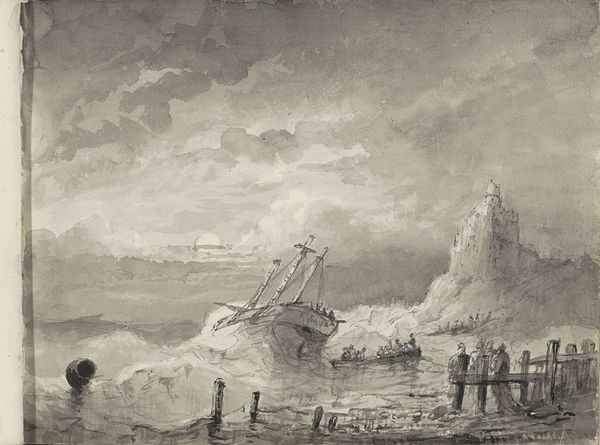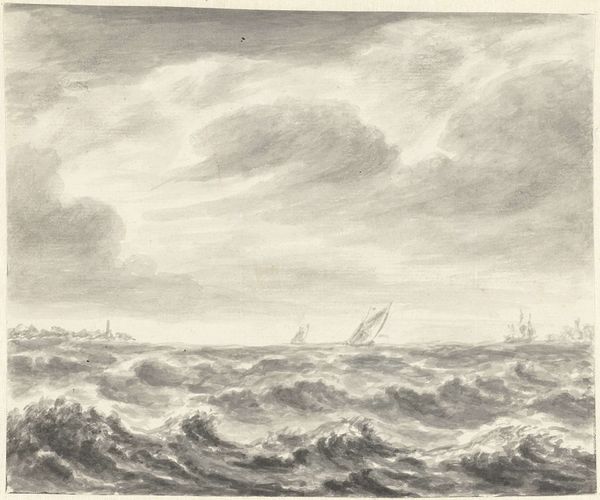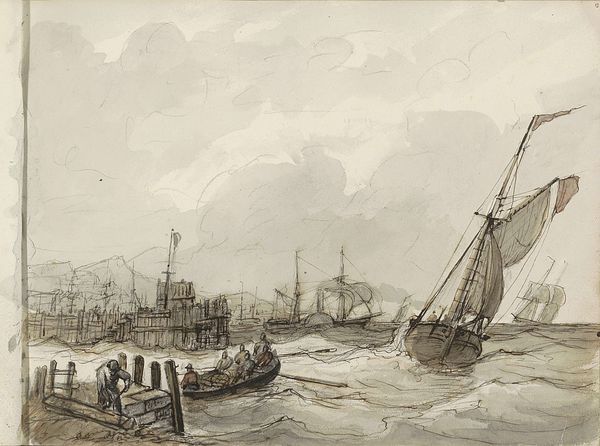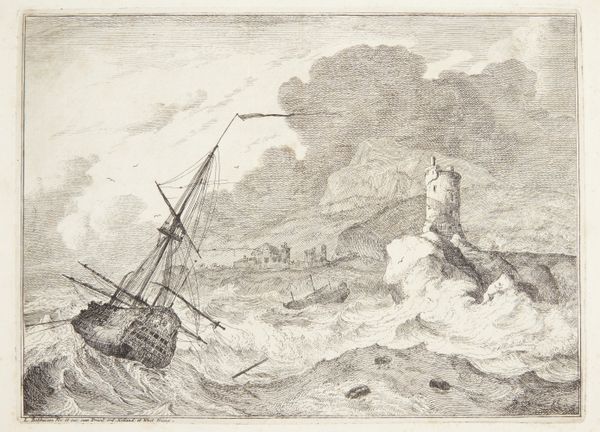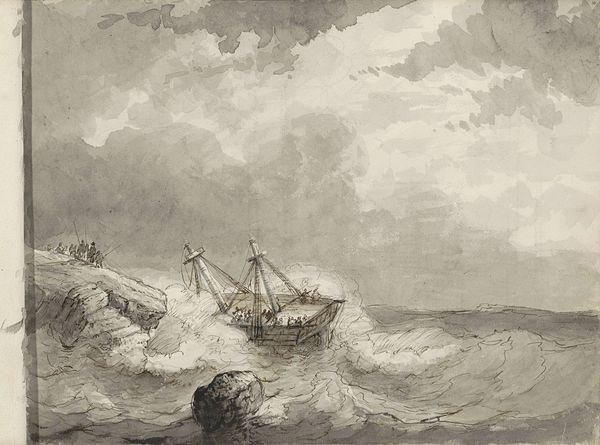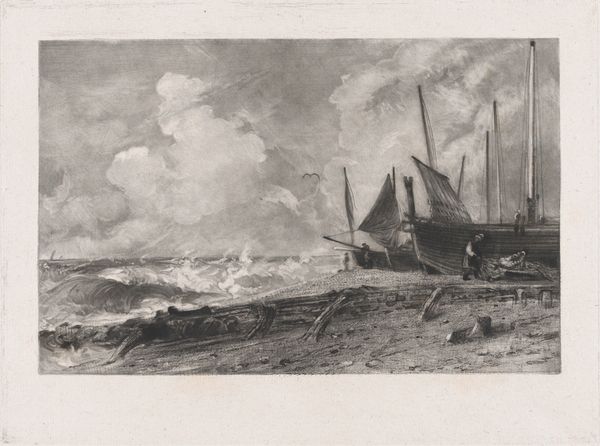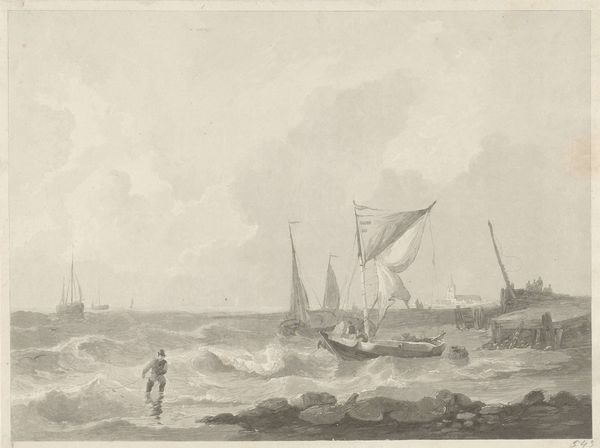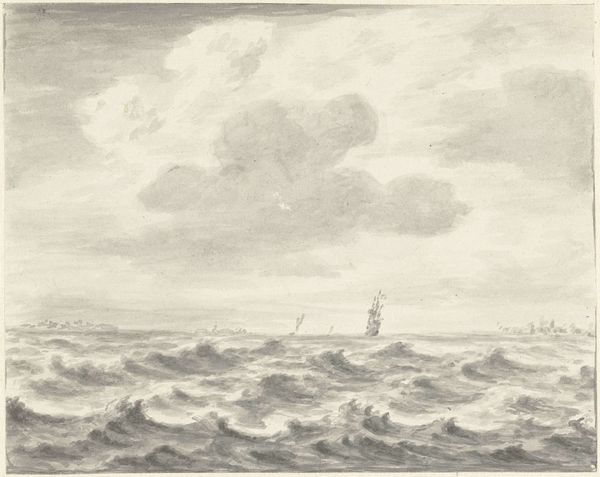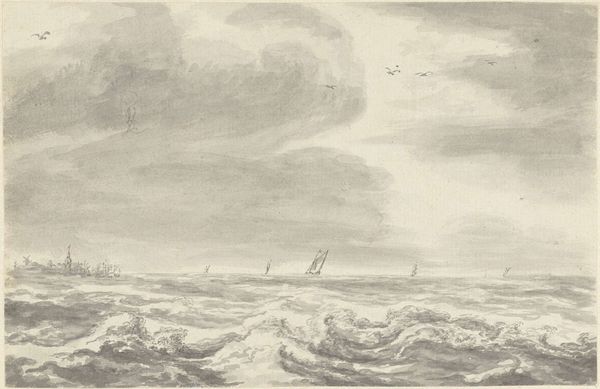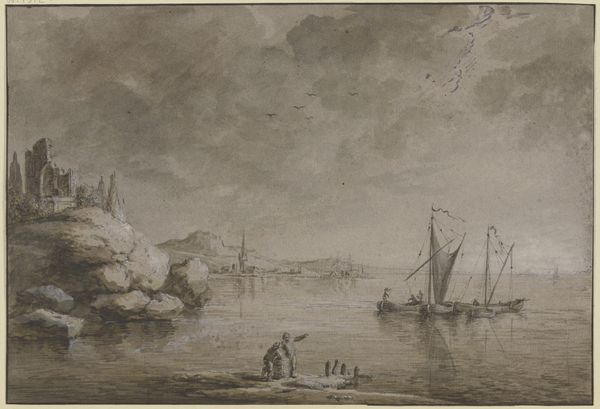
drawing, ink, pencil
#
drawing
#
aged paper
#
quirky sketch
#
pencil sketch
#
sketch book
#
landscape
#
personal sketchbook
#
ink
#
sketchwork
#
romanticism
#
pen-ink sketch
#
pencil
#
sketchbook drawing
#
genre-painting
#
storyboard and sketchbook work
#
sketchbook art
#
realism
Copyright: Rijks Museum: Open Domain
Editor: Here we have "Sloep met figuren bij een aanlegplaats," a pen and ink and pencil drawing dating from around 1825-1875 by Petrus Johannes Schotel. It's currently held at the Rijksmuseum. There’s a quaint charm to the aged paper and the energetic linework in this genre scene. How would you approach interpreting its meaning through its visual form? Curator: From a formalist perspective, the work immediately presents a study in contrasts. Observe the dichotomy between the static, almost geometric structures of the buildings and the pier, set against the dynamic, fluid lines depicting the water and sky. What effect do you think that tension between line and form creates? Editor: I suppose it could suggest the enduring presence of human construction against the fleeting nature of the sea. The repetitive verticals of the pier, for instance, draw my eye, even amidst the sketchier, more ambiguous renderings of the figures. Curator: Precisely. And note how the artist uses subtle variations in line thickness and density to establish depth. The heavier, more defined lines in the foreground, depicting the boat and its occupants, create a sense of immediacy, pulling the viewer into the scene, while the lighter, fainter lines of the background elements suggest distance. Could you argue the same use of lighting contributes to the visual texture? Editor: It’s amazing how much information Schotel conveys using relatively simple means! It shows the skill involved. It seems as though he really maximized the potential of the interplay of light and shadow created from these specific materials. Curator: Indeed. Schotel manipulates tone to generate form, creating volume and mass in the roiling clouds and choppy waves. This manipulation invites contemplation of form in relation to its surrounding space. Ultimately, how the work balances visual organization and emotive interpretation serves a study in pictorial structure. What did you take away? Editor: Seeing it as a formal interplay enriches my understanding beyond the narrative aspect. The focus on line, form, and contrast offers a new entry point into engaging the piece. Curator: The distillation of these fundamental visual elements offers us clarity in its execution. A valuable method to comprehend artmaking as a whole!
Comments
No comments
Be the first to comment and join the conversation on the ultimate creative platform.

